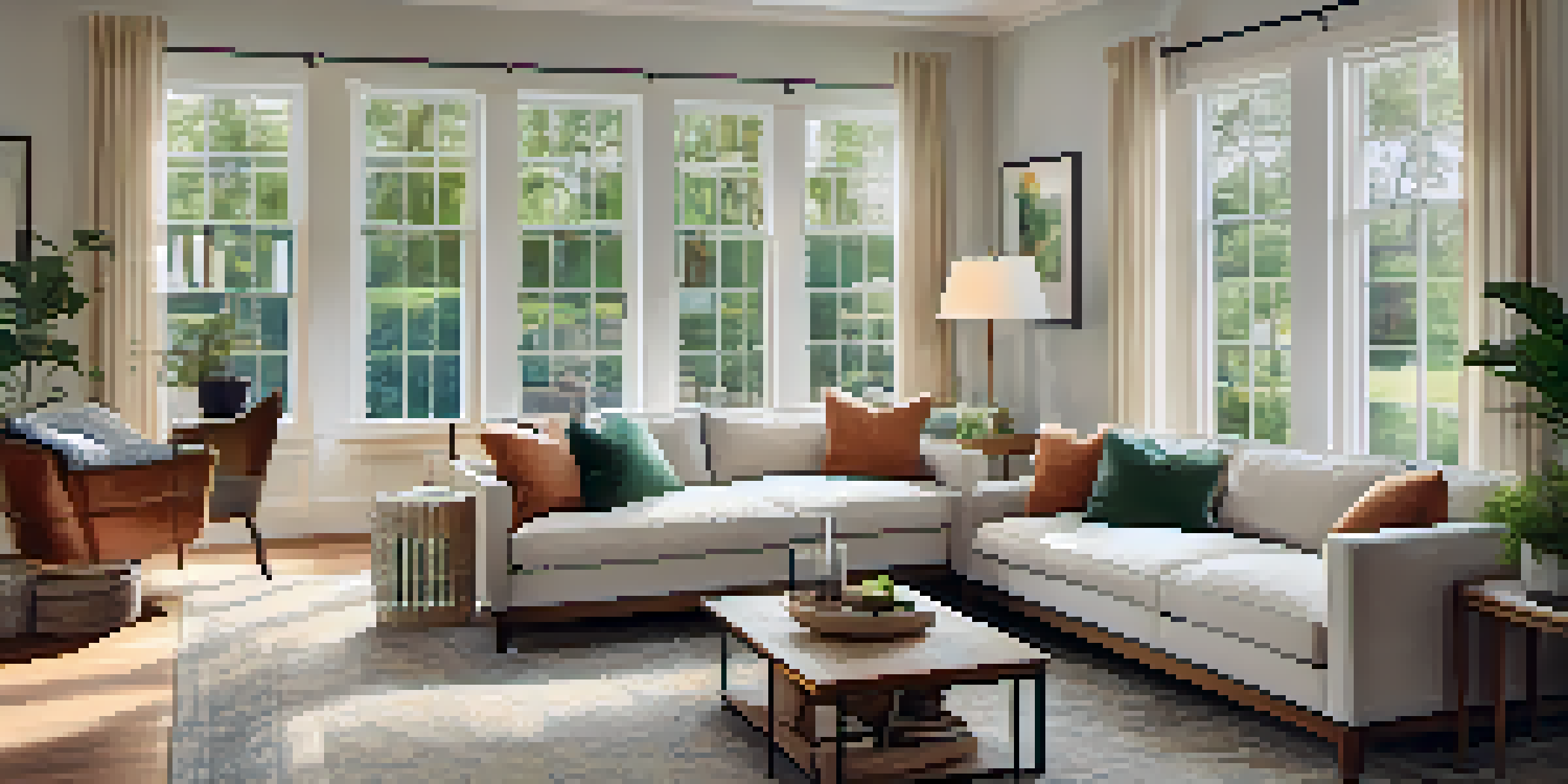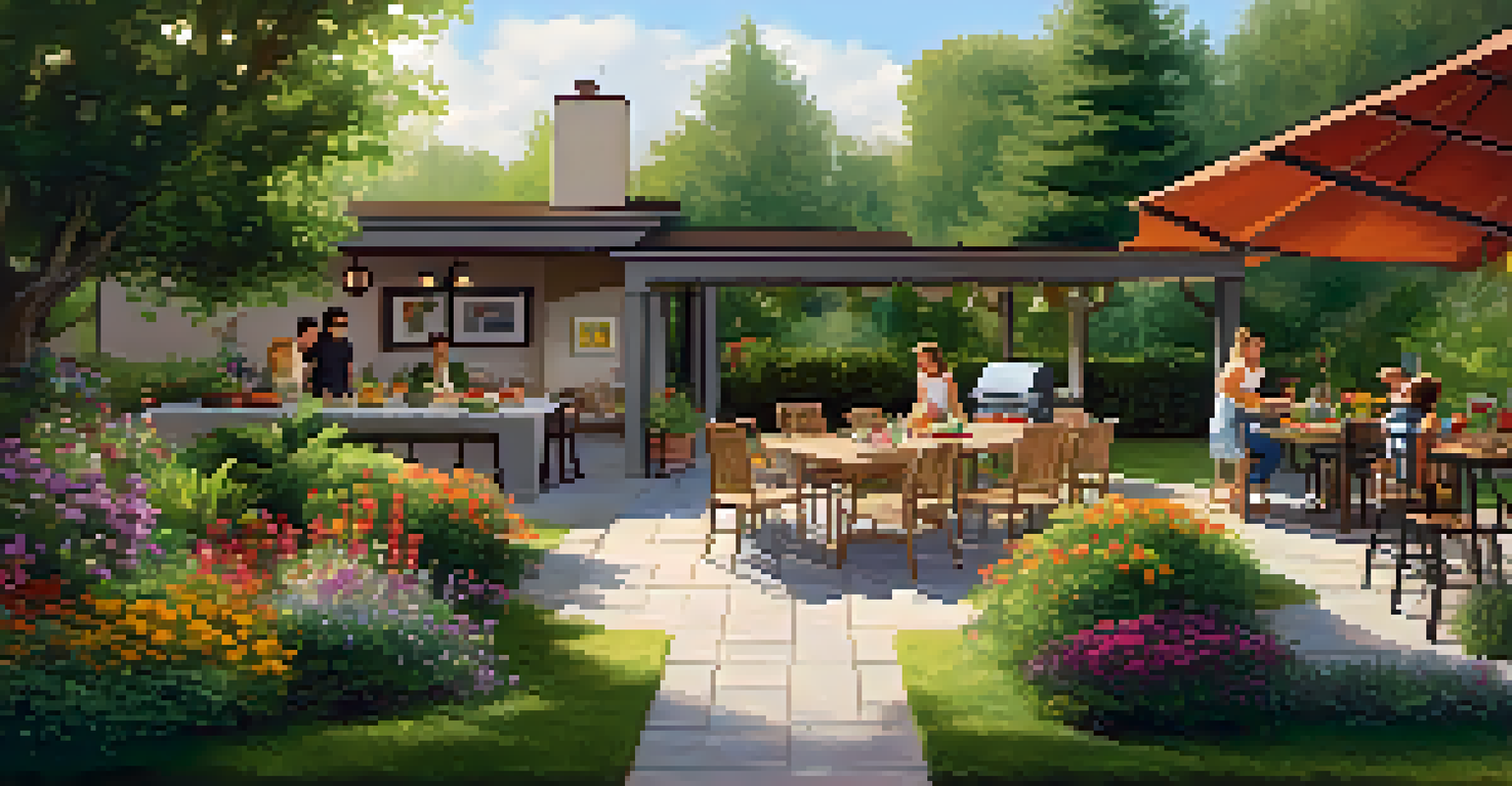The Role of Space in Multi-Generational Living Arrangements

Understanding Multi-Generational Living Arrangements
Multi-generational living arrangements are becoming increasingly popular, where multiple generations of a family live together under one roof. This setup often includes grandparents, parents, and children sharing a single home, creating a unique family dynamic. The reasons for this trend vary—from financial benefits to emotional support—making it a practical choice for many families today.
Family is not an important thing. It's everything.
One of the key advantages of multi-generational living is the opportunity for family bonding. With everyone living in close quarters, daily interactions can strengthen relationships and foster a sense of belonging. Children often benefit from the wisdom and guidance of their grandparents, while adults can share responsibilities and provide care for aging relatives.
However, this arrangement also poses challenges, especially regarding personal space and privacy. It's crucial to balance togetherness with the need for individual space, which is where thoughtful home design comes into play.
The Significance of Space in Family Dynamics
Space plays a pivotal role in shaping family dynamics within a multi-generational household. When each family member has their own designated area, it promotes a sense of independence and self-expression. This can be particularly important for teenagers and young adults who are navigating their identities while living with family.

Additionally, communal spaces like living rooms and kitchens foster interaction and togetherness, serving as the heart of the home. Think of these areas as the glue that holds the family unit together, where meals are shared, stories are exchanged, and memories are created. A well-thought-out layout encourages both shared moments and personal retreat.
Benefits of Multi-Generational Living
Living together fosters family bonding, emotional support, and shared responsibilities.
In essence, the right balance of private and communal space can enhance harmony within the household, reducing potential conflicts that may arise from too much closeness or not enough interaction.
Designing Functional Spaces for Everyone
When designing a home for multi-generational living, functionality is key. Spaces should be adaptable to cater to the diverse needs of each family member, from young children to elderly relatives. Features like open floor plans can facilitate movement and interaction, while separate wings or floors can provide privacy.
The love of a family is life's greatest blessing.
Moreover, incorporating universal design principles can make a home more accessible for everyone. This means including features like wider doorways, single-story layouts, and non-slip flooring to accommodate all ages and abilities. These thoughtful choices not only make daily living easier but also ensure the home can grow with the family over time.
Ultimately, a well-designed space can significantly improve the quality of life for everyone in a multi-generational household, making daily routines smoother and more enjoyable.
Creating Private Zones for Individual Needs
In a multi-generational home, carving out private zones is essential for maintaining harmony. Each family member needs a personal retreat where they can unwind and recharge. These spaces can be as simple as a cozy corner with a favorite chair or an entire room dedicated to relaxation and privacy.
Consider adding features like soundproofing or strategic furniture placement to enhance privacy within shared spaces. For instance, using room dividers can help create distinct areas in an open floor plan, allowing individuals to feel less exposed while still being part of the family environment. This thoughtful approach can alleviate feelings of overcrowding.
Importance of Private Spaces
Creating private zones within the home is essential for maintaining harmony and respecting individual needs.
By prioritizing private zones, families can enjoy the benefits of togetherness while respecting each other's need for solitude, leading to a more balanced living arrangement.
The Role of Outdoor Spaces in Family Living
Outdoor spaces can significantly enhance the quality of life in multi-generational living arrangements. A well-designed garden, patio, or deck can serve as an extension of the home, providing a refreshing atmosphere for relaxation and recreation. This outdoor area can be a place for family gatherings, barbecues, or simply enjoying nature together.
Moreover, outdoor spaces offer an excellent opportunity for physical activity, which is beneficial for all ages. Families can engage in gardening, play games, or enjoy leisurely walks, promoting health and well-being. This shared time outdoors can strengthen family bonds while also providing an escape from the confines of indoor living.
Ultimately, integrating outdoor spaces into the home design can create a harmonious blend of indoor and outdoor living, enriching the overall family experience.
Communication and Space Management Strategies
Effective communication is vital when it comes to managing space in a multi-generational household. Regular family meetings can help address concerns about privacy, shared responsibilities, and the functionality of common areas. This open dialogue fosters understanding and helps everyone feel heard.
Additionally, establishing clear guidelines about shared spaces can prevent conflicts and promote cooperation. For example, creating a schedule for using communal areas can ensure that everyone has time to enjoy these spaces without feeling crowded or overlooked. This level of organization can significantly enhance daily living.
Future of Adaptable Home Design
Future homes will increasingly feature flexible layouts and smart technology to accommodate diverse family dynamics.
By prioritizing communication and setting expectations, families can create a harmonious environment where everyone feels comfortable and valued.
The Future of Multi-Generational Living and Space Needs
As the trend of multi-generational living continues to rise, the need for thoughtful space design will only grow. Future home designs may increasingly incorporate flexible layouts that can adapt to changing family dynamics and needs. This could mean movable walls or modular furniture that allows families to reconfigure their living spaces as necessary.
Moreover, advancements in technology will play a significant role in enhancing these living arrangements. Smart home features can help manage daily tasks, improve safety for elderly residents, and facilitate connectivity among family members, regardless of where they are in the house.

In conclusion, the role of space in multi-generational living arrangements is crucial for creating a supportive and functional environment that can meet the diverse needs of all family members.